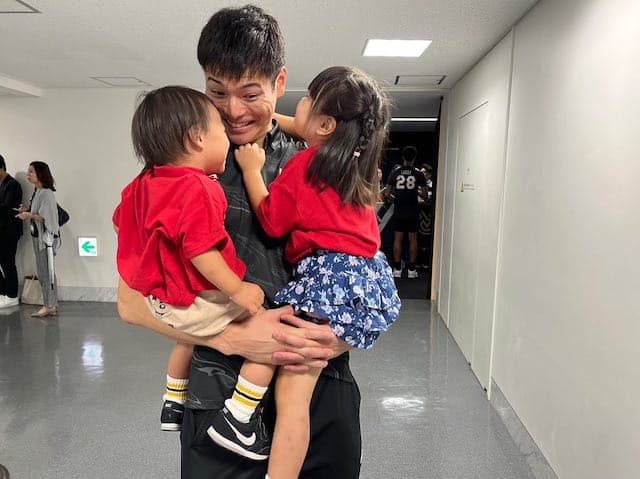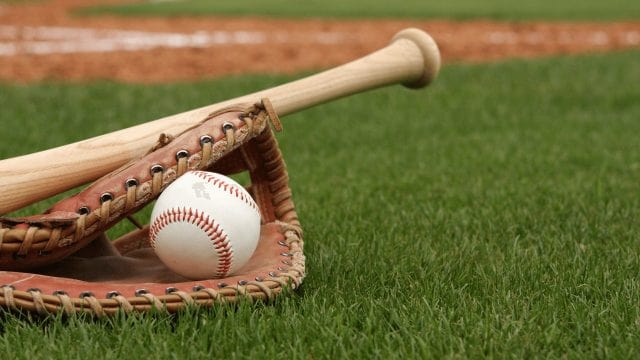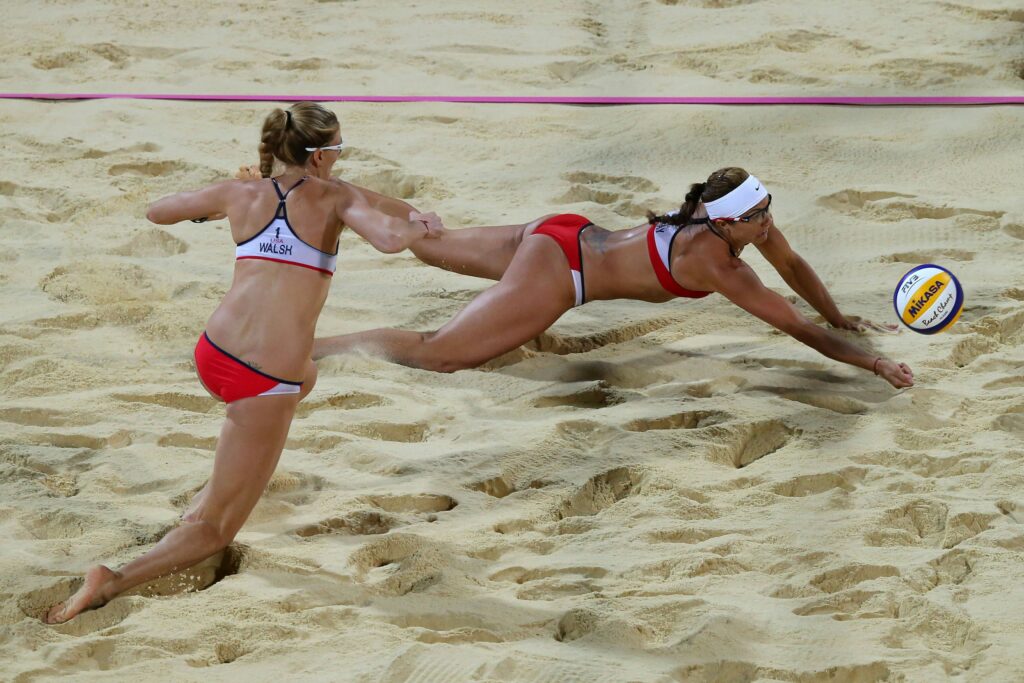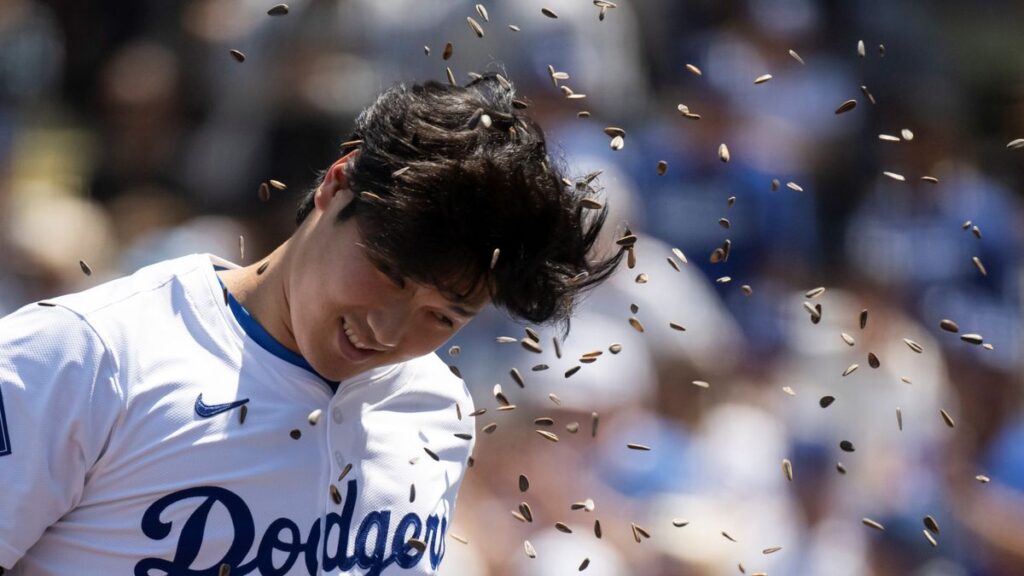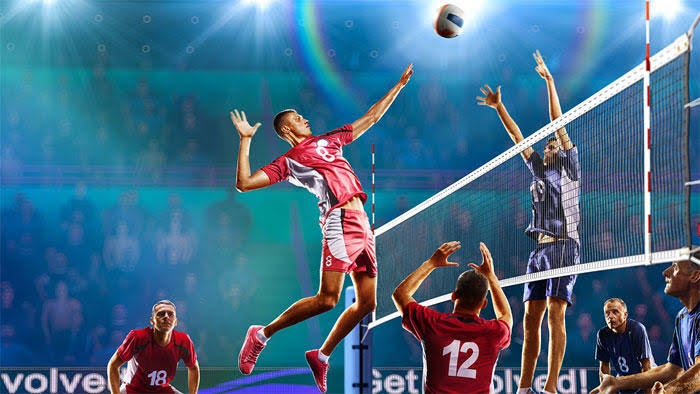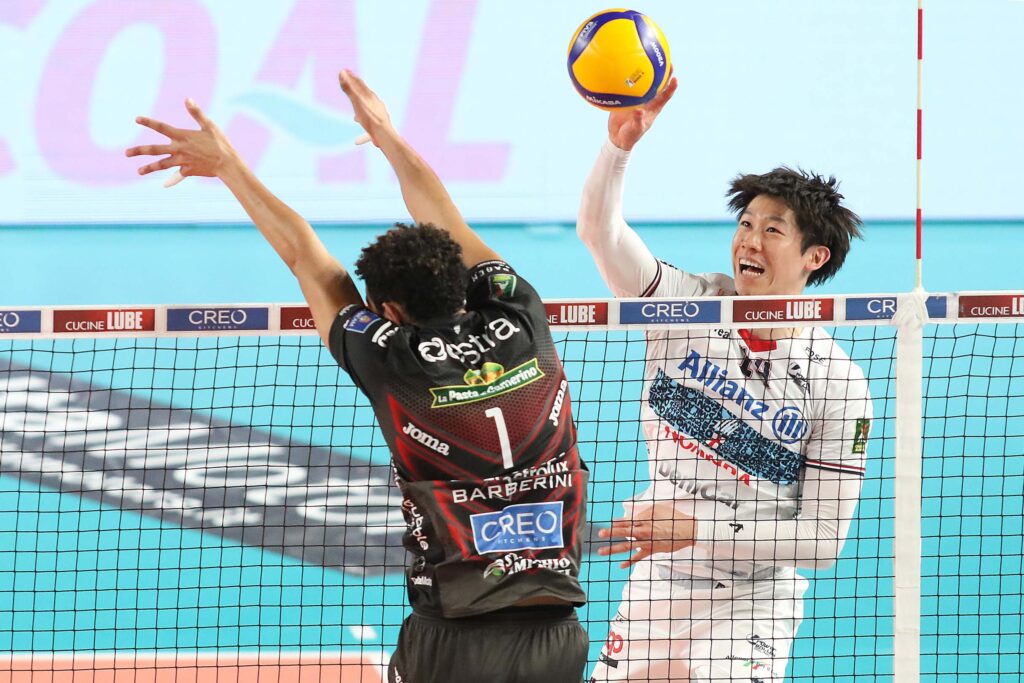
The dynamic spikes are the beauty of volleyball!
However, for beginners, it is difficult to match the toss with the run-up and jump.
I think it’s also difficult to maintain your posture in the air and hit a strong spike (attack).
In order to hit the spike effectively, you need to make sure to hit the ball in the area where you can apply the force of your palm.
Must be able to perfectly predict the trajectory of a tossed ball
This time, let’s hit the volleyball spike (attack)! to decide
We will introduce tips for volleyball spikes, tips for dodging blocks when spiking, and practice methods to improve your spiking skills.

目次
Tips for successful volleyball spikes
In volleyball, spikes are one of the important attacking tools that can change the flow of the game.
Powerful spikes not only put pressure on the opposing team, but also boost the morale of your own team.
However, effective spikes require skill and practice.
Here are some tips for successful volleyball spiking.
Importance of approach
- Steps for the right approach : To hit a powerful spike, you need the right approach. Typically, a 3-step pattern is used: “right-left-right” or “left-right-left” (depending on handedness). Through this step, you maximize your kinetic energy when jumping.
- Use acceleration : It’s important to start slowly at the beginning of your approach and increase your speed just before you jump. This acceleration creates the power to jump higher and further.
timing accuracy
- Synchronization with the set ball : Spiking success is highly dependent on timing. By jumping in time with the set ball, you can transfer maximum force to the ball. If it’s too fast, the force won’t be transmitted properly, and if it’s too slow, the speed of the ball will drop.
- Observe the opponent’s block : Before jumping, quickly observe the opponent’s block and determine the most advantageous point and direction.
How to use the body
- Arm swing : The arm is the main tool for hitting powerful spikes. At the moment you hit the ball, swing your arm forcefully and use the snap of your wrist to add spin to the ball.
- Use your whole body : Spiking isn’t just an arm movement. Requires coordinated movement of legs, hips, arms, and wrists. When jumping, bend your knees deeply, lean your upper body back, and use your whole body to hit the ball.
strategic thinking
- Read the court situation : Not only powerful spikes are effective. It is important to use spikes strategically, such as aiming at open areas of the court and changing direction by reading your opponent’s movements.
- Improve with Practice : Spiking technique only improves with continued practice and repetition. Multifaceted practice is important, including spiking for different types of sets, responding to blocks, and performing under pressure.
conclusion
Successful volleyball spiking requires proper technique, timing, body use, and strategic thinking.
By following these tips and practicing consistently, your spikes will become more powerful and accurate.
Spikes are a valuable source of points for your team and a powerful weapon that can change the course of a match.
Try these tips today to make the most of it.
Tips for dodging blocks with spikes
Dodging blocks with spikes requires not only technical mastery but also strategic thinking.
Here are some tips for dodging blocks and scoring effective spikes.
1. Observing the opponent’s blocker
- Observe the position and movement of the blocker : Before hitting the spike, check the position and movement of the opponent blocker. Determine if your blockers tend to jump early or in which direction they tend to move.
2. Change in RBI
- Vary the point of impact : Instead of always hitting the spike at the same height or at the same timing, try varying the height or front and back of the point of impact. This makes it difficult for blockers to time it.
3. Changes in speed and rhythm
- Mixing fast attacks and slow attacks : It is effective to evade blocks with quick attacks, or to disrupt the blocker’s timing with slow attacks (such as leglers). By changing the tempo of attacks, it becomes difficult to respond to blocks.
4. Change in direction
- Aim at different parts of the court : Anticipate blocks and aim at open areas of the court, such as along the lines, in the middle of the court, or deep inside. It is important not to let the player predict the direction of the ball.
5. Use of feints
- Use feints (pseudo attacks) : It is effective to lightly touch the ball to make a blocker raise the ball, pretending to be a strong hit, and then aim for a light hit or aiming for an open area on another court.
6. Use techniques
- Using a tool (block out) : This is a method of hitting the ball by using the blocker’s hand instead of hitting it hard so that the ball goes out. Aim for the outside or top of the blocker’s hand.
7. Use team play
- Collaboration with setters : Collaborate with setters to create unpredictable attack patterns. A setter’s skillful toss can confuse blockers.
8. Improvement through practice
- Practice situational judgment : During training and matches, try out different spiking methods and learn which techniques to use in which situations.
By practicing these tips and applying them in matches, you can increase your chances of dodging blocks and scoring spikes.
In addition to technical improvement, insight into the opponent and situational judgment are the keys to hitting effective spikes.
How to practice on the volleyball court to improve your spikes
In order to become good at spiking, it is important to acquire basic techniques and practice them continuously.
Below are some practice methods to improve your spiking technique.
1. Practice your approach
- Repetition of basic steps : Repeat the basic steps of the approach (“right-left-right” or “left-right-left”) to ingrain the rhythm into your body.
- Practice accelerating : Be slow at the beginning of your approach, then practice accelerating just before jumping. Gradually increase the distance, getting the feeling of accelerating on the last two steps.
2. Improving jumping power
- Plyometric training : Plyometric training such as squat jumps, box jumps, and burpee jumps are effective for increasing jumping power.
- Lower body strength training : Perform exercises to strengthen lower body strength, such as squats, deadlifts, and leg presses.
3. RBI practice
- Keep the ball high : Practice hitting the ball as high as possible at the end of your approach. This is important to develop the feel of hitting the ball over the net.
- Toss accuracy : Toss accuracy is also very important when practicing spiking. Practice tossing at a certain height and position to improve the stability of your hitting points.
4. Arm swing and hand usage
- Practice swinging your arms : Repeatedly practice swinging your arms up and down. By strengthening your arm swing, you can transfer more force to the ball.
- Hand shape and contact : Practice the shape of your hand when hitting the ball (open your hand and hit the center of the ball) and how to make contact (use the snap of your wrist to add spin).
5. Visual practice
- Observing blocks and court : Practice quickly observing your opponent’s blocks and open areas of the court when spiking. This allows you to hit more effective spikes.
6. Practice assessing situations
- Practicing spikes according to the situation : Practice spikes according to the situation, such as placement with less force, quick attacks, and line attacks, depending on the opponent’s placement and your own position.
How to practice spiking at home to improve your spike skills
To improve your spiking technique at home, you need to choose exercises that can be done with limited space and equipment.
Below, we will introduce some practice methods that you can do at home to improve your spike skills.
1. Approach step practice
- Practice the steps : Find a safe space in your home and practice repeating the basic steps of the approach (“right-left-right” or “left-right-left”). This will help develop a sense of rhythm and foot movement.
2. Jump training
- Plyometrics : Perform plyometric training such as jump squats and burpees to improve your jumping power. These exercises can be performed even in a small space.
- Jumping and Reaching : Practice reaching as high as possible while jumping. This allows you to improve the height of the point of impact when spiking.
3. Arm swing and wrist usage
- Arm swing practice : Practice repeated arm swings to imitate the powerful downward swing of a spike. The key is to make the swing movement smooth.
- Wrist Snap : Practice snapping your wrist in the air without hitting the ball. This is an important technique for applying rotation to the ball when hitting the ball.
4. Visual training
- Observing game footage : Observe the spike movements of professional players and advanced players on video, understand their techniques and movements, and use them for image training.
- Imagery training : Close your eyes and picture the perfect approach, jump, and spike sequence in your mind. This practice will help improve the accuracy of your movements.
5. Core training
- Strengthen your core : Perform exercises to strengthen your core (abs, back muscles, obliques, etc.). A strong core is directly linked to improved stability and power when jumping.
6. Endurance and flexibility
- Stamina training : Build your stamina by running around the house or around your neighborhood or using a jump rope.
- Stretching : Stretch on a daily basis to increase muscle flexibility, prevent injury, and improve performance.
By combining these practice methods, you can improve your spiking technique at home.
The key is to keep practicing regularly and pay attention to the quality of each movement.
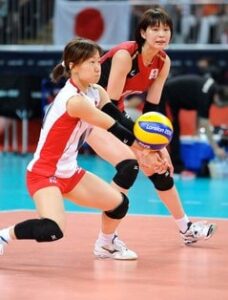
Don’t forget to improve other basic volleyball skills as well.
In volleyball, serve, receive, toss, and attack are all linked.
A good attack starts with a good serve and receive.
Of course it is important to learn the spike tips introduced here.
It is equally important to improve receiving and tossing techniques that lead to spikes.
If you want to get better at receiving and tossing, I have written an article with tips on those things.
Please also take a look
Volleyball underhand pass tips and practice methods
Volleyball overhand pass tips and practice methods
If you can’t reach or receive a volleyball serve, try this.
